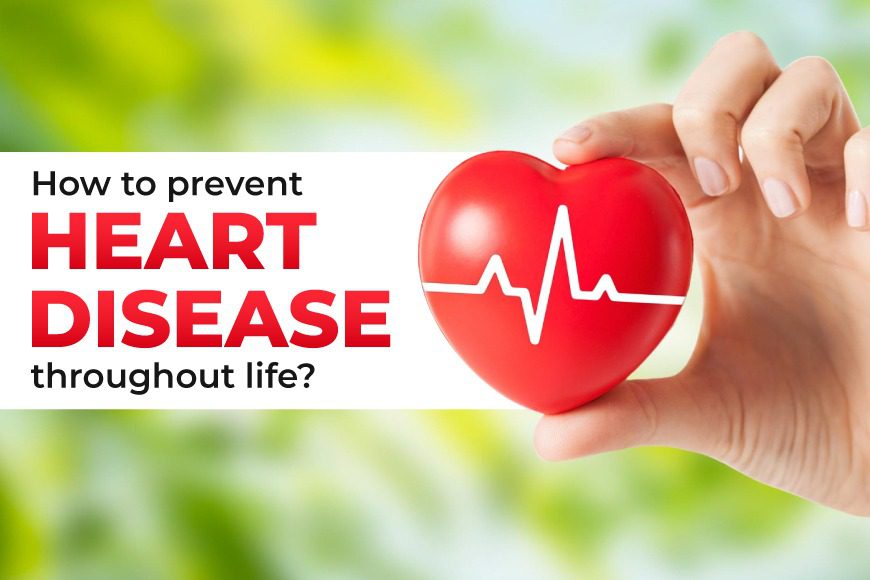CT Angiography
Know all about CT angiography, procedure details, benefits and its requirement in diagnosing vascular conditions and guiding the treatment.

What is angiography?
An angiogram is a form of X-ray used to examine blood arteries. A special dye called a contrast agent must first be put into the blood since blood vessels do not appear clearly on a standard X-ray. Your blood vessels are highlighted, making any issues visible to the doctor, and this whole process is called angiography.
Angiograms are X-ray pictures made by angiography.
There are numerous angiography techniques that can be used to diagnose a range of medical issues.



- Computed Tomography Angiography (CTA): It provides horizontal or axial images, or slices, of blood arteries for diagnosis.
- Coronary Angiography: It makes the coronary arteries' interiors visible. With the aid of these images, stenoses in the arteries that may be the source of chest pain or even a heart attack can be found.



- Digital Subtraction Angiography (DSA): It is used to examine blood flow to the brain.
- Radionuclide Angiography: It helps in the assessment of the target tissue and is aided with a small amount of radioactive tracer to evaluate the beating heart's chambers.
- Pulmonary Angiography: It helps assess issues like aneurysms, stenosis, and blockages.
- Magnetic Resonance Angiography (MRA): It is used by medical professionals to check the heart and other soft tissues and determine blood flow.
- Renal Angiography: It creates images of the renal blood arteries to look for any indications of obstruction or other abnormalities influencing the kidneys' blood flow.
Important Note: An imaging examination called a CT angiography allows you to see your blood vessels and tissues. It is frequently used by medical professionals to examine your coronary arteries. Traditional coronary angiograms are more intrusive than CT angiograms. The contrast dye is injected using an IV. On a CT scan, this dye highlights your blood arteries. The majority of CT angiograms are rapid and painless. The day of the test, you may go home.
What is CT angiography?
CT Angiography is a non-invasive procedure and allows medical professionals to evaluate the structure and health of blood vessels, guide treatment decisions, and monitor disease progression. It combines computed tomography (CT) scanning with the injection of a contrast dye to visualize blood vessels and assess blood flow. It provides detailed and cross-sectional images of arteries and veins throughout the body.
Apart from cardiac, it is also used for cerebral, and peripheral vascular evaluations, providing valuable information for patient care.
How Does CT Angiography Work?
- The CT angiogram is very similar to a CT scan. At the beginning of the procedure, you will be asked to remove any jewellery, glasses or clothes and change into a hospital gown. A technician will place an IV in your hand or arm. This IV has a dye (contrast) flowing through it. The dye makes blood vessels more visible on CT scans. Additionally, electrodes will be applied to your chest to record your heart rate.
- As the CT scanner moves through the small, tunnel-like equipment, you will be lying on a lengthy table in the middle of the scanner. You may ask your doctor for some calming medication if you become anxious in enclosed spaces.
- You will be advised to remain motionless and hold your breath as instructed throughout the scan. This is because the images can become hazy due to frequent movement.
- A glass pane divides the room where the care provider runs the CT scanner from your exam room and can contact you through an intercom.
- Although the scanning phase of the test only takes a few seconds, the entire procedure could take up to an hour.
Why might I need a CT Angiography?
The main purpose of a CT coronary angiography is to look for blocked or constricted heart arteries (coronary artery disease). It can, however, check for additional heart issues. Accurate diagnosis is the first step towards any successful treatment. CT angiography allows our doctors to assess the severity of your condition and help curate a treatment plan for a faster and more comfortable recovery.
How accurate is a CT Angiography compared to a traditional Angiogram?
Both CT and conventional angiograms allow you to see your blood arteries. Traditional angiograms are more invasive than CT angiograms.
In a traditional angiogram, a doctor inserts a long, hollow tube (catheter) through an artery, typically in your groin or wrist.
According to the research, coronary CT angiography showed a sensitivity of 80% versus 67% and a specificity of 67% versus 75% when compared to invasive coronary angiography.
To avoid requiring patients to undergo invasive angiography, specialists recommend getting a coronary CT scan to rule out obstructive coronary stenosis (OCS).
What is a CT Angiogram?
A CT angiogram – CT stands for Computed Tomography and an angiogram means imaging to show your doctor how your blood flows through your blood vessels. It is a diagnostic test that allows doctors to see your blood arteries and tissues. A dye that highlights your blood vessels and tissues is injected by your doctor during the test. The highlighted areas are then examined using a CT scan, a type of specialist X-ray.
What is a CT coronary Angiogram?
A CT coronary angiogram is a non-invasive imaging test that uses computed tomography (CT) technology to visualize the arteries of the heart. It provides detailed images of the coronary arteries, which supply blood to the heart muscle.
During the procedure, a contrast dye is injected into the patient’s bloodstream, which highlights the blood vessels on the CT scan images. The CT scanner then takes multiple x-ray images of the heart from different angles, and a computer reconstructs these images into a 3D representation of the coronary arteries.
This test is commonly used to evaluate the presence and extent of blockages or narrowing in the coronary arteries. It helps doctors diagnose coronary artery disease, assess the risk of a heart attack, and determine the need for further intervention such as angioplasty or bypass surgery.
CT coronary angiograms are less invasive than traditional coronary angiograms, which involve threading a catheter through the blood vessels to the heart. It is also faster and associated with a lower risk of complications.
However, it’s essential to consult with your healthcare provider to determine if a CT coronary angiogram is the appropriate diagnostic test for your specific situation, as they can provide you with personalized advice and guidance.
Why may a CT angiography be necessary?
Checking for blocked or constricted coronary arteries is the most frequent purpose for a CT angiography. However, a CT angiography may be used by your doctor to identify any issue affecting your blood vessels, such as:
- Blood vessel widening, abnormal bulges, or aneurysms.
- A condition called atherosclerosis in which fatty plaques form inside blood arteries.
- Cardiovascular disease/Coronary Artery Disease.
- Embolism in the lungs or Pulmonary Embolism.
What distinguishes a CT angiography from a conventional angiogram (also known as a cardiac catheterization)?
Both CT and conventional angiograms allow you to see your blood arteries. Traditional angiograms are more intrusive than CT angiograms.
In a standard angiogram, your healthcare professional places a long, hollow tube (catheter) through a significant blood vessel called an artery, typically in your groin or wrist. The healthcare professional will then utilize X-ray fluoroscopy to image your coronary arteries after injecting contrast dye through the catheter.
Your healthcare professional administers the contrast material intravenously (via an IV) during a CT angiography. The IV is often placed in a vein in your arm or hand.
What distinguishes a CT coronary angiography from a cardiac CT scan?
Both CT coronary angiograms and cardiac CT scans use specialized X-rays to examine your inside organs. Because a contrast dye injection is required, CT coronary angiograms are a little more intrusive. No dye injections are used during cardiac CT scans.
Who conducts CT angiograms?
Usually, a radiologist conducts this examination. Radiologists are medical professionals who focus on taking and analyzing imaging scans. A radiologist with expertise in cardiovascular imagery performs a CT coronary angiography on you.
How should I get ready for a CT angiography?
You will receive detailed preparation instructions from your healthcare physician before your CT angiography. Before the test, you might need to temporarily cease taking some drugs, such as vasodilators (Viagra®, Levitra®).
You should usually cease eating four hours prior to the exam. Water can be consumed as usual.
Caffeine should not be consumed for 12 hours before to a coronary CT angiography. Caffeine might quicken your heartbeat and make it more challenging to see your coronary arteries clearly.
What to anticipate on the CT angiogram day?
A CT angiography is often performed in a radiology department at a hospital or an outpatient imaging center. You’ll change into a hospital gown when you get there. You will take off your eyeglasses and any metal accessories you may have, including hairpins, jewellery, and dentures. Since most implants are comprised of titanium, you can typically still have a CT angiography even if you have a pacemaker, joint replacement, or other metal implants in your body. If you have a metal implant, let your doctor know.
What to anticipate throughout a CT angiogram?
A technician administers an anesthetic before placing an IV in your hand or arm. Contrast dye is injected into the IV.
The technician will apply sticky patches (electrodes) to your chest for a coronary CT angiography. The electrodes are connected to a device that monitors and records your heartbeat.
You lie on a table that slides inside a CT scanner that has the shape of a doughnut.
From a different room, a technician runs the CT scanner, capturing pictures from various angles. To stop your chest from moving during the scan, they might tell you to hold your breath for a short period.
The CT scan itself could simply take a few seconds or several minutes. The process normally takes an hour, including setup time.
What to anticipate following a CT angiogram?
The day after a CT angiogram, you are free to go home and carry on with your regular activities. To help your body rid itself of the contrast dye, your doctor may advise you to drink a lot of water.
What dangers can CT angiograms pose?
Most people find CT angiograms to be safe procedures. Your doctor may prescribe you medication, such as oral steroids, to reduce your risk of experiencing an adverse reaction to the contrast dye if you have a history of allergic reactions, particularly to the contrast dye used in earlier CT scans. Your kidneys are more prone to harm from contrast dye if you have known kidney problems.
Who is not a candidate for a CT angiogram?
If you have certain medical conditions, such as kidney disease, there is a slight chance that the contrast dye could harm your kidneys. If you have certain conditions, your doctor could suggest an alternative test.
If you believe you could be pregnant, tell your healthcare practitioner. Because CT angiograms contain a small quantity of radiation, doctors rarely advise pregnant women to have them.
Book CT Angiography near you
Avail discount coupon after your consultation with SAAOL experts. For details, connect with our support team.
Patients Speaks


My blockage was 80-90% and heart pumping was about 24 and my main complaints were discomfort, unable to walk, major breathing issues. That is when I came across SAAOL and Dr. Bimal Chhajer. I watched his lectures and learned that Heart blockages can be reversed without surgery and with a few lifestyle changes. I started my treatment at SAAOL and within a month’s time I feel much healthier and are able to perform all day-to-day activities with ease. I am able to walk for an hour daily, I don’t feel fatigue or any kind of discomfort now. I am very grateful to Dr. Chhajer for his guidance and for providing heart patients with an alternate that is cost effective also.


I had a minor heart attack in 1989 and doctors told me that getting bypass surgery is my only option but I refused. I met Dr. Bimal Chhajer at a medical residential camp in Faridabad and at that time I was unable to do day-to-day work due to excessive pain in my body and I was taking atleast 6-7 Sorbitrate tablets per day. I immediately started the EECP treatment and Detox Therapy along with diet and lifestyle changes including yoga, and meditation, and followed a zero oil diet plan for 40 days. For 2 years I kept on following these lifestyle changes and now after 25 years I am completely fine and I am also able to do normal day-to-day activities very easily. All this was made possible SAAOL without any kind of bypass surgery or angioplasty.


Year ago my husband was suffering from angina and discomfort in walking and doing sedentary activities. We heard about SAAOL through YouTube. We consulted Dr.Chhajer and were told that my husband’s Heart health could get better without surgery and with a few lifestyle changes. Post completion of the treatment his test reports only showed 50% blockage. He takes his regular medication and follows the SAAOL recommended Lifestyle like Zero Oil Cooking, Yoga, etc. His health is constantly improving. We are very grateful to SAAOL and Dr.Chhajer for his noble service for the society.


About 6-7 months ago I suffered from minor angina due to which doctors told me to go for a stent. After 3 months, I had a Heart stroke which got me really worried about my health. A friend recommended Dr.Bimal’s YouTube channel and I got to know about Natural Bypass. . It is a process that treats Heart blockage without any surgery and I started my treatment immediately. I took 35 EECP sessions along with medication and followed the SAAOL Lifestyle. I am so relieved now as my condition has improved tremendously and I am at ease now. I would like to thank Dr.Chhajer for his advise and for healing lakhs of Heart patients the Natural way. I will definitely spread knowledge about this treatment to my near and dear ones.
Patient Education
Explore a wide range of health-related topics and learn more about keeping your heart robust and healthy.
Reverse Your Heart Blockages with EECP Treatment
Nurturing Women’s Heart Health: Your Handbook for Knowledge, Protection, and Self-Empowerment
New CSI Guidelines: The Significance of Early Lipid Profiling and Non-Fasting Tests
Nurturing Women’s Heart Health: Your Handbook for Knowledge, Protection, and Self-Empowerment
New CSI Guidelines: The Significance of Early Lipid Profiling and Non-Fasting Tests
A Guide to Heart-Healthy Diet: Foods That Love Your Heart Back
- 1
- 2
No post found
Reverse Your Heart Blockages with EECP Treatment
How to prevent heart disease throughout life?
How to monitor heart health at home?
- 1
- 2






